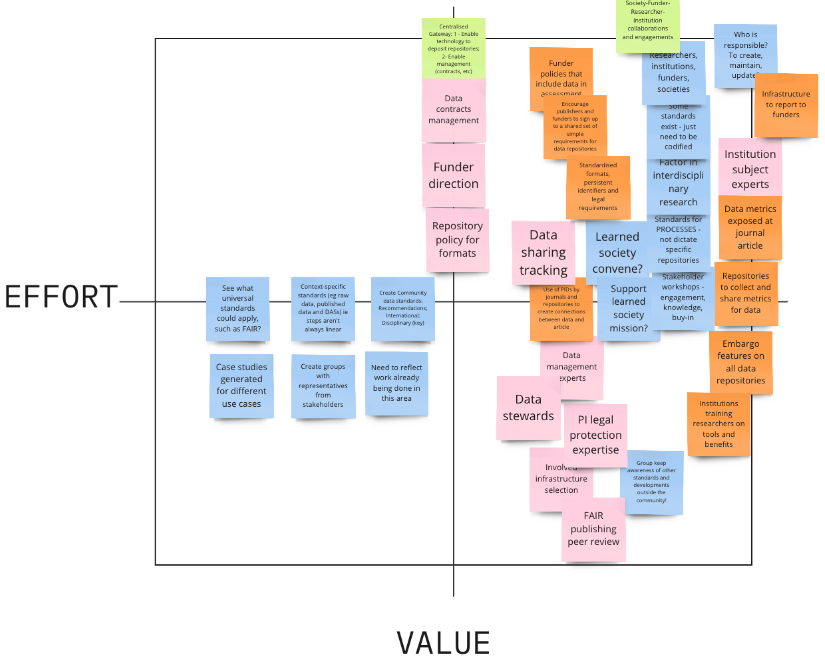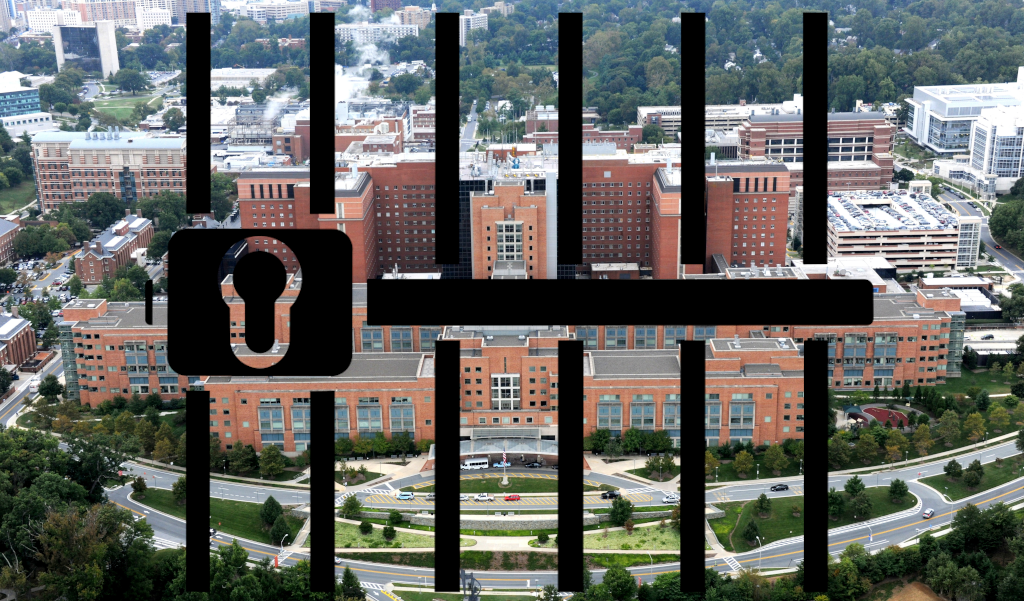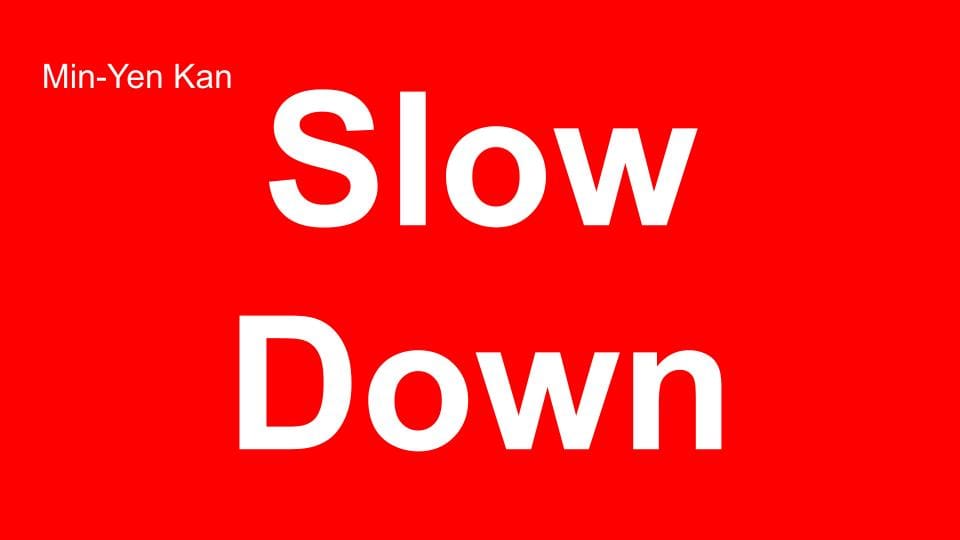Coming down from the recent FORCE11 Scholarly Communication Institute (FSCI) and FORCE2024 conference at UCLA has allowed reflection on some of the recurring themes from the two events. One of these was the issue of language appropriation in the open scholarship space. In the process of attempting to write some of these issues up, it became clear that this requires something of a wander down history lane. So here for your reading enjoyment is my potted history of the language games we have been, and continue to, play in this space. They range from arguments about different colours used to describe open, through to how we describe open infrastructure.
Lately, the challenge has moved into how the words ‘risk’, ‘trust’ and ‘sustainability’ are being weaponised – but that is a discussion for a different post…
Colourblindness
The ‘colours’ used around open access have been problematic from the get-go. For reasons somewhat lost in time, in the early 2000s we called putting a copy of the work into a repository “green” open access, and those articles that were published open access were described as “gold”.
The challenge was that gold OA came in multiple forms. There were fully gold journals that charged an APC such as those published by PLOS and BioMed Central (which also ran a membership program for discounting - they were ahead of their time). Note this was before BioMed Central was bought out by Springer in 2008. But there were also many fully gold OA journals that did not charge anything – they were free to publish, free to read. The availability from 2001 of open journal platforms such as Open Journal Systems (OJS), developed by the Public Knowledge Project was hugely helpful for this model. There was a third type of gold OA - where an author publishing in a subscription journal had the ‘opportunity’ to pay a fee to make their paper open access. This hybrid open access began at scale with Springer offering the option for their whole portfolio, called ‘Open Choice’ in 2004.
Over the second half of the noughties there was a battle over the interpretation of gold. The word itself is problematic - with the double implication of ‘the best’ and ‘expensive’. In an attempt to reduce the confusion libraries often made the distinction that gold OA can mean publishing in a fully OA journal which *sometimes* attracts a fee, or in a hybrid journal when it *always* costs.
This started a cascade of new types of ‘open’ all with attendant colours. Towards the end of the 2010’s ‘bronze’ OA was established. This is not a type of open that is recognised by the 2002 Budapest Declaration on Open Access. These articles are available on websites hosted by their publisher — either immediately or following an embargo. The lack of formal licensing for reuse (and the fact the works can be withdrawn at any time) preclude their inclusion in a ‘true’ open access classification.
By the middle of the 2010s ‘gold OA’ was generally understood to mean ‘pay to publish’ (even now libraries still attempt to make the original distinction). I cannot pinpoint where the term Diamond OA originated, but it was established enough to be discussed in 2017 without a great deal of explanation. It is now so messy we have different (and yes, complicated) ways of explaining the whole taxonomy, ranging from decision trees to Venn diagrams. Arguments are still occurring between players on the field, with multiple recent exchanges described in this 2021 discussion Why Open Access definitions are confusing.
While the term ‘Diamond OA’ is relatively recent, the concept actually started in 1994 with Stephen Harnard’s Subversive Proposal. Indeed, as an openly available tool for the purposes of publishing open access, the Open Journal Systems (OJS) option has been extraordinarily successful, with over 8 million items published through the platform. However the grassroots nature of much of OJS publishing - occurring at an individual institutional or society level - has meant the scale of the publishing has been somewhat hidden. This has allowed the narrative that diamond OA publishing is somehow disorganised and disaggregated. It has until recently, ironically, been treated as something ‘new’, and there has been a narrative of ‘diamond OA is amateurish so you can’t trust it’.
But diamond OA is now starting to get organised, with an Action Plan for Diamond Open Access published in 2022 by Science Europe, cOAlition S, OPERAS, and the French National Research Agency (ANR), which was subsequently endorsed by the German funding body DFG. Earlier this year, the Operational Diamond OA Criteria for Journals was published.
This is a potential threat to the ‘gold OA means pay to publish’ narrative. After all, diamonds are ‘fancier’ than gold, so a recent attempt has been to start describing these journals as ‘sponsored’ with the subsequent implication they are ‘charity’ cases, and at risk of folding. It is an attempt to associate a pejorative to what looks like an expanding and increasingly successful model.
The ‘open infrastructure’ battleground
Moving on from descriptions of open, the word ‘open’ itself is being coopted into the infrastructure space. As one example (of many), in May 2024, Digital Science published a paper on ‘Leveraging open research infrastructure for digital transformation’. I responded to figshare’s announcement about this in LinkedIn with a small comment: “Hi guys sorry to split hairs but figshare is not ‘open research infrastructure’. It is commercial infrastructure that supports open research.” This triggered a lively exchange, with Mark Hahnel pointing to the definitions from CERN, UNESCO and SPARC Europe, noting that “everyone is entitled to their own opinions”.
This is not a matter of ‘opinion’.
Mark is correct, those definitions do not make the distinction between commercially owned and community supported infrastructure. But this creates problems for non-commercial infrastructure. I subsequently responded to Mark: “I think [at risk of major nerdism] this is something worth more discussion. Is there a *different* term that infrastructure supporting open research that is openly (non-commercially) owned and managed should call itself?
The distinction here is the difference between OPEN research INFRASTRUCTURE and OPEN RESEARCH infrastructure. Figshare is the latter - infrastructure that supports open research. But there needs to be awareness that the former (open infrastructure) is a specific part of the ecosystem. It operates differently.
Another slightly different angle in the infrastructure space is the need to distinguish between open and ‘fauxpen’, discussed by Geoffrey Bilder in a plenary at the FORCE2024 conference. This specifically refers to commercial organisations acquiring research tools that were originally open, but are now behind a paywall, perhaps still appearing to be open.
Confused? I am not surprised.
Where to from here?
These are just a couple of examples of the obfuscation around language in the open world. The stakes have risen more recently with weaponisation of the words ‘trust’, ‘risk’ and ‘sustainability’ (the subject of future discussion).
This language appropriation is irritating at best but fundamentally it is deeply concerning. There are echoes of ‘newspeak’ as described in George Orwell’s Nineteen Eighty Four. Newspeak changed the meaning of words and was ‘designed to diminish the range of thought’. We need to remain aware of these issues and listen carefully to what is being said, and by whom.
Words matter. It is very hard to have meaningful conversations and make informed decisions when we cannot agree what we are talking about.
Copyright © 2024 Danny Kingsley. Distributed under the terms of the Creative Commons Attribution 4.0 License.










